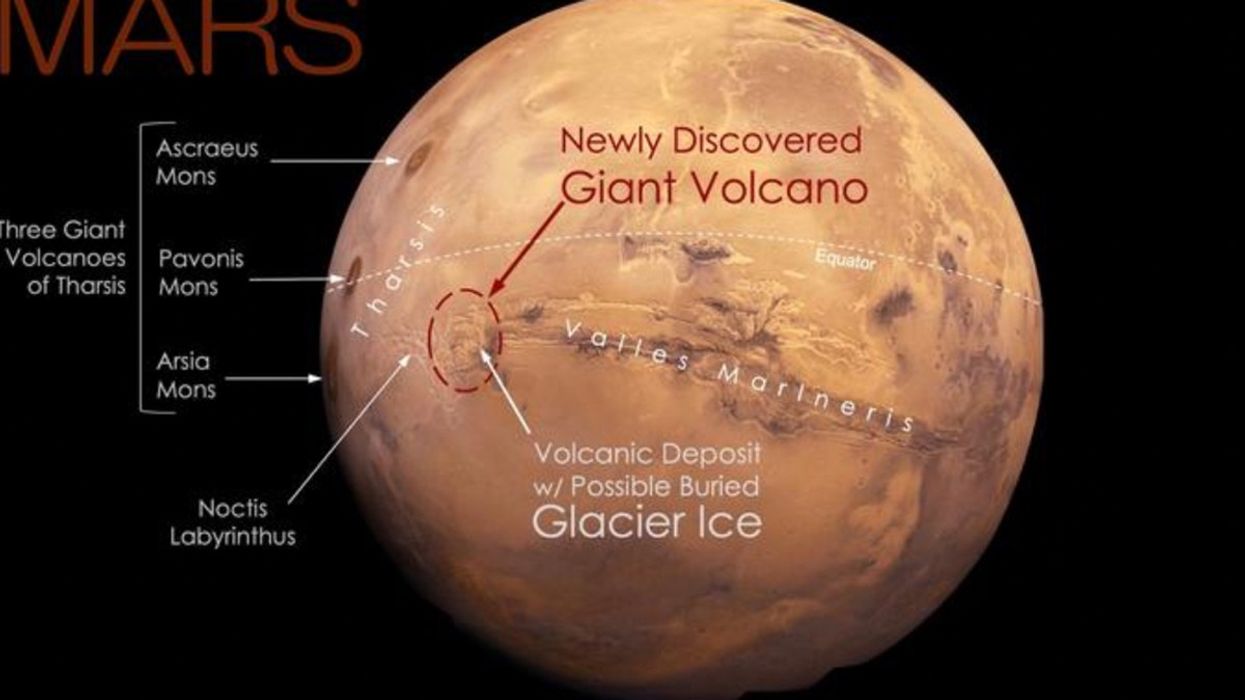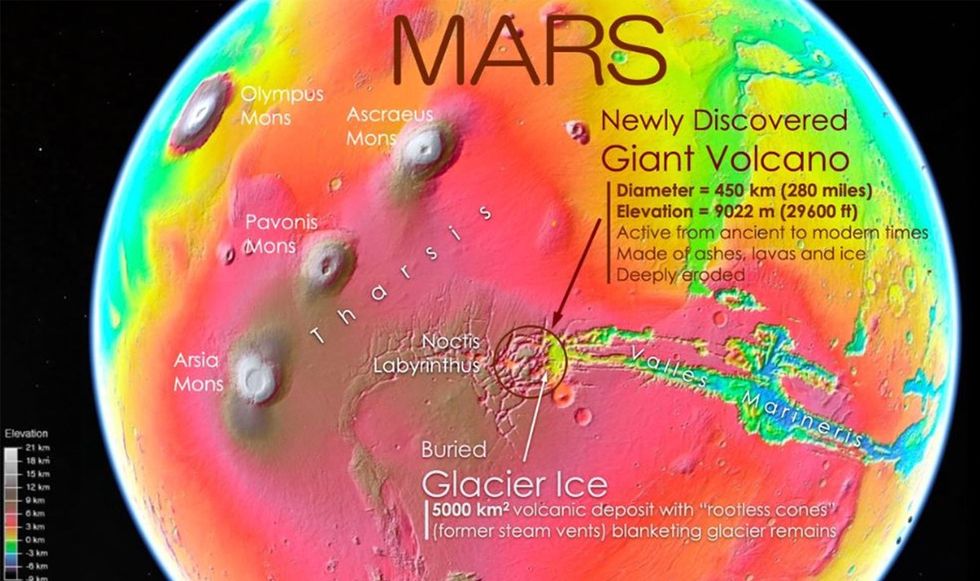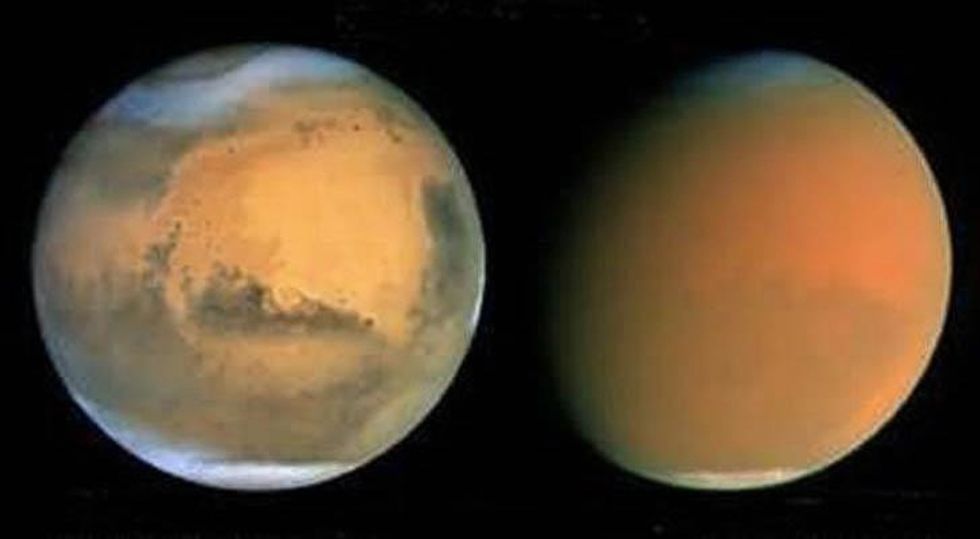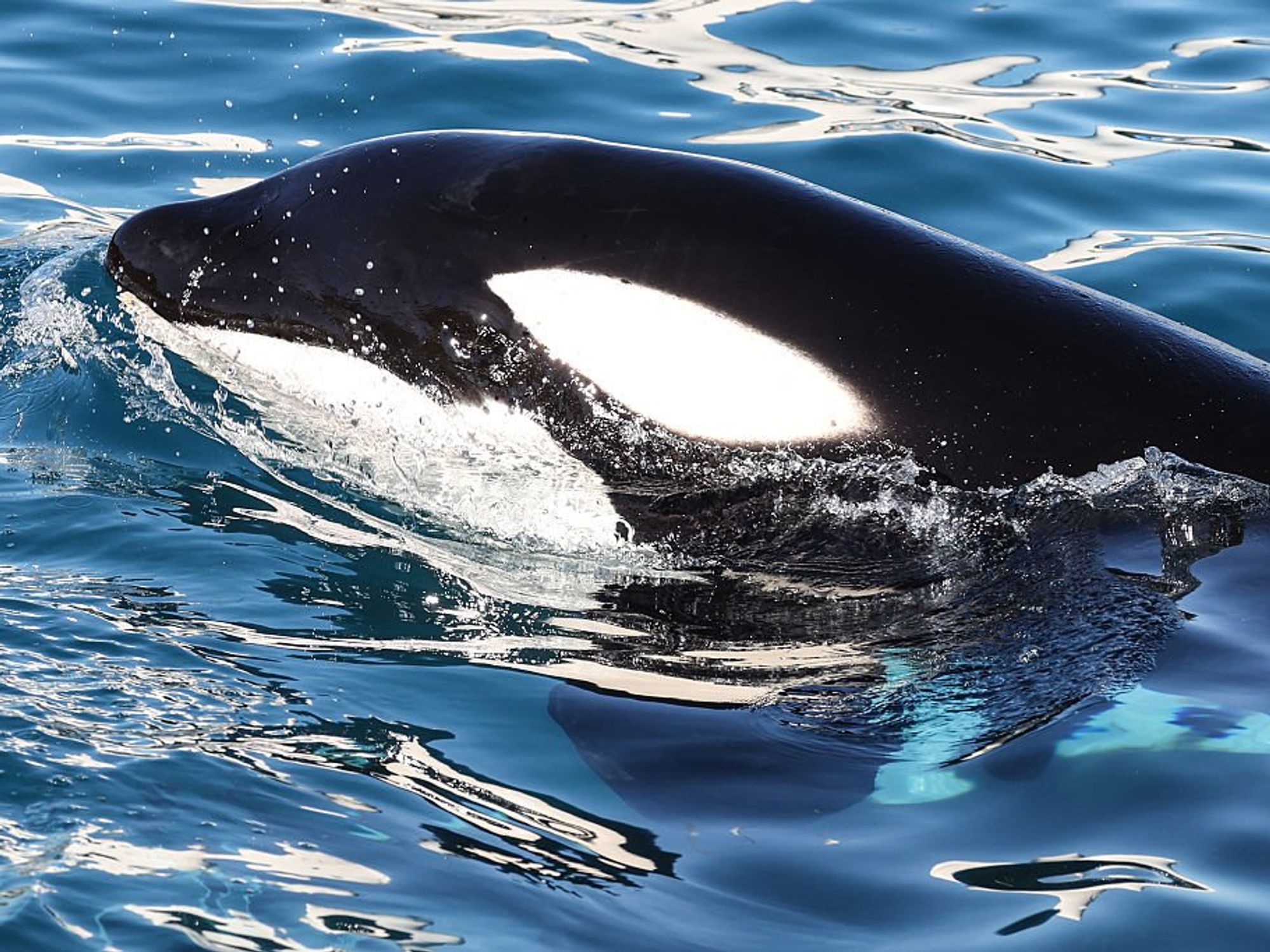Giant volcano spanning 280 miles discovered on Mars: Scientists hail 'smoking gun' as search for life deepens

Scientists have discovered a giant volcano and a possible sheet of buried glacier on Mars
|NASA/USGS/SETI Institute/Pascal Lee and Sourabh Shubham

- Scientists discovered 'Noctis volcano' hiding in plain sight near the planet's equator
- The location of the volcano deepens the search for life on the red planet
Don't Miss
Most Read
Latest
Scientists have discovered a giant volcano and a possible sheet of buried glacier on Mars.
The finding has been hailed as a "smoking gun" as it points to an exciting new location to study the red planet's geologic evolution through time, search for life, and explore with robots and humans in the future.
Scientists made the groundbreaking announcement at the 55th Lunar and Planetary Science Conference, which was held in The Woodlands, Texas.
They revealed the discovery of the giant volcano and possible sheet of buried glacier ice in the eastern part of Mars’ Tharsis volcanic province, near the planet’s equator.
The giant volcano, temporarily named the Noctis volcano, had been hiding in plain sight for decades in one of the red planet's most iconic regions, at the boundary between the heavily fractured maze-like Noctis Labyrinthus (Labyrinth of the Night) and the monumental canyons of Valles Marineris (Valleys of Mariner).

The newly discovered volcano spans 280 miles
|NASA Mars Global Surveyor (MGS)/SETI Institute/ Pascal Lee and Sourabh Shubham
Scientists say the volcano had been seen repeatedly by Nasa's orbiting spacecraft since 1971, but was deeply eroded and beyond easy recognition.
The newly discovered volcano spans 280 miles and reaches an elevation of 29,600 feet. Its size and "complex modification history" suggest it has been active for a very long time.
In its southeastern part lies a thin, recent volcanic deposit beneath which glacier ice is likely still present.
“We were examining the geology of an area where we had found the remains of a glacier last year when we realised we were inside a huge and deeply eroded volcano,” said Doctor Pascal Lee, planetary scientist with the SETI Institute and the Mars Institute based at NASA Ames Research Center, and the lead author of the study.
Much about the newly discovered giant volcano remains a mystery. Although it is clear that it has been active for a long time and began to build up early in Mars’ history, it is unknown how early exactly.
Similarly, although it has experienced eruptions even in modern times, it is unknown if it is still volcanically active and might erupt again.
And if it has been active for a very long time, could the combination of sustained warmth and water from ice have allowed the site to harbour life?
The possible presence of glacier ice at shallow depths near the equator means that humans could potentially explore a less frigid part of the planet while still being able to extract water for hydration and manufacturing rocket fuel (by breaking down H2O into hydrogen and oxygen).
“It’s really a combination of things that makes the Noctis volcano site exceptionally exciting. It’s an ancient and long-lived volcano so deeply eroded that you could hike, drive, or fly through it to examine, sample, and date different parts of its interior to study Mars’ evolution through time. It has also had a long history of heat interacting with water and ice, which makes it a prime location for astrobiology and our search for signs of life. Finally, with glacier ice likely still preserved near the surface in a relatively warm equatorial region on Mars, the place is looking very attractive for robotic and human exploration,” said Doctor Lee.
LATEST DEVELOPMENTS

Several clues, taken together, give away the volcanic nature of the jumble of layered mesas on the red planet
| PADrilling deeper into science
Several clues, taken together, give away the volcanic nature of the jumble of layered mesas and canyons in this eastern part of Noctis Labyrinthus, scientists say.
The central summit area is marked by several elevated mesas forming an arc, reaching a regional high and sloping downhill away from the summit area.
The gentle outer slopes extend out to 225 kilometres (140 miles) away in different directions. A caldera remnant – the remains of a collapsed volcanic crater once host to a lava lake – can be seen near the centre of the structure.
Lava flows, pyroclastic deposits (made of volcanic particulate materials such as ash, cinders, pumice and tephra) and hydrated mineral deposits occur in several areas within the structure’s perimeter.
“This area of Mars is known to have a wide variety of hydrated minerals spanning a long stretch of Martian history. A volcanic setting for these minerals had long been suspected. So, it may not be too surprising to find a volcano here,” explained Sourabh Shubham, a graduate student at the University of Maryland’s Department of Geology and the study’s co-author. “In some sense, this large volcano is a long-sought ‘smoking gun’”.
In addition to the volcano, the study reports the discovery of a large, 5000 square kilometre (1930 square mile) area of volcanic deposits within the volcano’s perimeter presenting a large number of low, rounded and elongated, blister-like mounds.
This “blistered terrain” is interpreted to be a field of “rootless cones”, mounds produced by explosive steam venting or steam swelling when a thin blanket of hot volcanic materials comes to rest on top of a water or ice-rich surface.
The Noctis volcano presents a long and complex history of modification, possibly from a combination of fracturing, thermal erosion, and glacial erosion.
Researchers interpret the volcano to be a vast shield made of layered accumulations of pyroclastic materials, lavas, and ice, the latter resulting from repeated buildups of snow and glaciers on its flanks through time.
As fractures and faults eventually developed, in particular in connection with the uplift of the broader Tharsis region on which the volcano sits, lavas began to rise through different parts of the volcano, leading to thermal erosion and removal of vast amounts of buried ice and the catastrophic collapse of entire sections of the volcano.
Subsequent glaciations continued their erosion, giving many canyons within the structure their present distinctive shape. In this context the “relict glacier” and the possible buried sheet of glacier ice around it, might be remnants of the latest glaciation episode affecting the Noctis volcano.










